Colloquium: Sebastian Bredemann and Emine Şahingöz
On Tuesday, February 12th at 4pm in SH 3.104, we will have two speakers in the GK colloquium: Sebastian Bredemann and Emine Şahingöz. See below for abstracts.
Speaker: Sebastian Bredemann
Time: 4-5pm
Title: Phonological agreement
Abstract:
Phonological agreement (PA) is a phenomenon under which agreement is determined by the phonological properties of a noun. Examples are given in (1) and (2) for the language Abuq (Nekitel 1986), where the final segment of the noun determines the agreement marking on adjectives and verbs. The noun almil‘bird’ in (1) ends on [l] and accordingly the agreement morpheme on the verb and the adjective are realized as [l]. The noun ihiaburuh ‘butterfly’ in (2) has the final consonant [h], and thus the agreement on the verb and the adjective is realized as [h]. The final consonant of the noun can take any form allowed by the phonology in word-final position. Therefore, it must be assumed that noun-final consonants are not the exponents of a morphological category. Thus, there is no morphological property that could determine the agreement in (1) and (2).
PA in Abuq (Nekitel 1986):
(1) almil afu-l-i l-aheʔ
bird good-AGR-ADJ AGR-went
‘A good bird went’
(2) ihiaburuh afu-h-i h–aheʔ
butterfly good-AGR-ADJ AGR-went
‘A good butterfly went’
Agreement is generally assumed to be computed in the syntactic component. Most generative models of grammar believe that syntax has no access to phonological information (see Chomsky 1995 among others). This assumption is challenged by phonological agreement. If phonological agreement is computed in the syntax like agreement for morphological properties, the syntax must have access to phonological information in order to select agreement markers based on their phonological content.
This talk has two main goals: First, I will provide an overview of the main properties that hold across the known PA systems. Second, I will present the theoretical account which I developed in my MA-thesis. This account maintains the claim that syntax is phonology-free and is able to account for the typological properties I have identified.
I assume that PA applies between heads that agree for morphosyntactic features underlyingly (see Sande 2015, 2017 for a similar proposal). PA is analyzed as a phonological process that alternates the phonological structure of agreement morphemes creating identity between a part of the noun and morphemes that mark morphosyntactic agreement with that noun. I will finish my talk by laying out my plans on how I aim to further investigate the phenomenon.
References
Chomsky, N. 1995. The minimalist program. Cambridge, MA: MIT Press.
Nekitel, O. 1986. A Sketch of Nominal Concord in Abuʔ (An Arapesh Language). Papers in New Guinea Linguistics 24. The Australian National University, 177-205.
Sande, Hannah. 2015. An interface model of phonologically determined agreement. Proceedings of the 33rd West Coast Conference on Formal Linguistics. 339-350.
Sande, Hannah. 2017. Distributing morphology conditioned phonology: Three case studies from Guébie. Berkeley, CA: University of California dissertation.
======
Speaker: Emine Şahingöz
Time: 5-6pm
Title: Ossetic Phrasal Accent – A first Approach
Abstract:
In this talk I will first give a brief introduction to the accentuation rules of Ossetic (described below) and illustrate previous research on the Ossetic accent. Afterwards I will present my methodology and plans for upcoming fieldwork.
The accentuation rules are relatively comprehensible: the stress in Ossetic (resp. the Iron dialect, as in Digor the rules differ), in separate words as well as in syntagmas (resp. phrases), depends on the distribution of strong (a, e, i, o, u) and weak (æ, y) vowels; the first two vowels in a word or word group decide the stressed syllable. If the first vowel is a strong one, it is stressed. But if the first vowel is weak, usually the second syllable is stressed:
| 1) strong-strong | 2) strong-weak | 3) weak-strong | 4) weak-weak |
| xábar (‘news’ sg.) | bíræ (‘many’) | xæʒár (‘house’) | fyldǽr (‘more’) |
Affected syntagmas are connected and share a single stress, by which a considerable amount of words appear without an independent accent (Abaev 1949: 10 ff.). In the Iron dialect an accent retraction takes place whenever the noun is definite: xǽʒar ‘the house’ vs. xæʒár ‘(a) house’ (Cheung 2002: 118). According to Bailey (1945: 15 ff.), in historical stages of the language, definiteness used to be expressed by the particle *i (< *i̯a-), which is still preserved in the Digor dialect.
The Ossetic phrasal accent does not only affect the immediate constituents of the stressed word; it can affect a whole phrase:
(3)
| Iron: | ||||||||
| Wyrýzmæg | ys-xíz-y | Sadénǯyz–y | ⁀ | kalač-y | ⁀ | mæsyǯ–y | ⁀ | sær-mæ |
| PN | pv-climb-3sg.prs | black_sea-gen | city-gen | tower-gen | head-dat |
In the colloquium, I will propose theories on how the Iron dialect shows the phenomenon of a phrasal accent, and how the Digor dialect does not have accentuation rules as clear as Iron.
References
Abaev, V. I., 1949. Osetinskij jazyk i fol‘klor. Moscow.
Bailey, H. W., 1945. Asica. Transactions of the Philological Society, 44 (1), 1-38.
Cheung, J., 2002. Studies in the historical development of the Ossetic vocalism (Vol. 21). Reichert Verlag.
